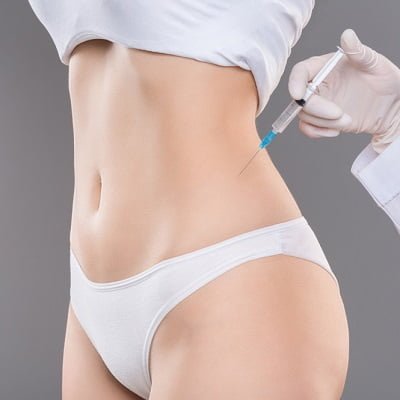Body fillers have gained popularity for enhancing various areas of the body, from adding volume to reshaping certain features. However, just like with facial fillers, people may wonder if Body Fillers Oman can be reversed in cases of dissatisfaction, complications, or a change in aesthetic preferences. This article delves into the process of correcting body fillers, addressing key questions about reversibility, the procedures involved, and what to expect if you are in Oman seeking to modify your filler treatment.
Understanding Body Fillers and Their Purpose
Body fillers are injectable substances designed to add volume, contour, or smooth out areas of the body that may lack fullness or symmetry. Commonly used in areas like the buttocks, thighs, and breasts, body fillers are typically made from biocompatible materials such as hyaluronic acid (HA) or poly-lactic acid. These treatments offer a non-invasive alternative to surgical procedures, delivering results that last anywhere from several months to a couple of years.
While body fillers are generally safe and effective, some patients may seek reversal due to unsatisfactory results or complications. The good news is that for certain types of fillers, especially those based on hyaluronic acid, reversal is possible.
Can Body Fillers Be Reversed?
Reversing body fillers is indeed possible, depending on the type of filler used. Hyaluronic acid (HA) fillers, for example, can be dissolved using an enzyme called hyaluronidase. This enzyme works by breaking down the filler material, allowing the body to metabolize and eliminate it naturally.
However, other types of fillers, such as those made from poly-L-lactic acid or calcium hydroxylapatite, may not be reversible in the same way. These fillers are designed to stimulate collagen production over time and are gradually absorbed by the body. In these cases, the reversal process may be more complex or may involve waiting for the filler to naturally dissipate.
The Reversal Process: What to Expect
If you are considering the removal or correction of body fillers, it’s essential to understand the process involved. Here’s what you can expect when opting for a reversal procedure:
1. Consultation with a Specialist
Before undergoing any reversal treatment, it’s crucial to consult with a qualified cosmetic surgeon or dermatologist. In Oman, professionals experienced in body fillers will assess your situation, the type of filler used, and your desired outcome. They will determine whether a complete reversal or partial correction is necessary.
2. Use of Hyaluronidase for HA Fillers
If you’ve had hyaluronic acid-based fillers, hyaluronidase will likely be the treatment of choice. The enzyme is injected into the area where the filler was applied, and it starts working within 24-48 hours. Depending on the amount of filler to be dissolved, multiple sessions may be required. This process is relatively quick and offers the advantage of immediate results.
3. Waiting for Natural Absorption
For non-HA fillers, such as poly-L-lactic acid, waiting for the body to absorb the filler naturally may be the best option. These fillers are designed to stimulate collagen production and are absorbed over time, typically within one to two years. If immediate reversal isn’t an option, you may need to wait or consider additional treatments to speed up the process.
4. Surgical Correction
In some cases, particularly with larger volumes of filler or complications, surgical correction may be required. This could involve the removal of filler material or even liposuction to correct excessive volume. While this is less common, it remains an option for those seeking significant reversal or improvement.
Risks and Considerations of Reversing Body Fillers
While body filler reversal can offer a solution for unwanted results, it is important to consider the associated risks. These include potential allergic reactions to hyaluronidase, uneven skin texture after filler removal, or dissatisfaction with the corrected outcome. Moreover, reversing fillers may not always return the treated area to its exact pre-treatment state.
1. Allergic Reactions
Although hyaluronidase is widely used for dissolving fillers, there is a small risk of an allergic reaction. Patients should discuss any allergies or sensitivities with their doctor before undergoing the procedure. In most cases, a patch test can be conducted to ensure the treatment is safe.
2. Potential for Unevenness
Depending on how much filler is dissolved and the location of the treatment, there may be slight unevenness in the treated area. This can typically be corrected with further treatments or filler applications, but it’s something to be aware of when considering a reversal.
3. Time and Patience
If you are dealing with a non-reversible filler, patience is key. Waiting for the filler to naturally break down or undergoing additional treatments requires time, but it can prevent invasive procedures.
How to Avoid Filler Reversal: Preventing Unsatisfactory Results
The best way to avoid the need for body filler correction is to take preventative measures before your initial treatment. Here are some steps you can take to ensure satisfactory results:
1. Choose a Qualified Practitioner
The expertise of the practitioner plays a critical role in the outcome of your body filler treatment. In Oman, seek out licensed, experienced professionals who specialize in body fillers and aesthetic procedures. This minimizes the risk of overfilling or uneven results.
2. Start Small
When it comes to fillers, starting with a conservative amount is always a safer option. You can gradually add more if needed, but reversing an overly aggressive treatment can be more challenging.
3. Discuss Expectations
Be clear with your practitioner about your goals and expectations. Open communication can prevent misunderstandings and help the practitioner tailor the treatment to your preferences.
Conclusion: Correcting Body Fillers with Confidence
While body fillers offer a non-surgical way to enhance your appearance, not every result may meet your expectations. Thankfully, for many types of fillers, especially those based on hyaluronic acid, correction is possible with the help of hyaluronidase. In Oman, consulting with an experienced professional will ensure you receive the best guidance on whether reversal is the right option for you.






Comments